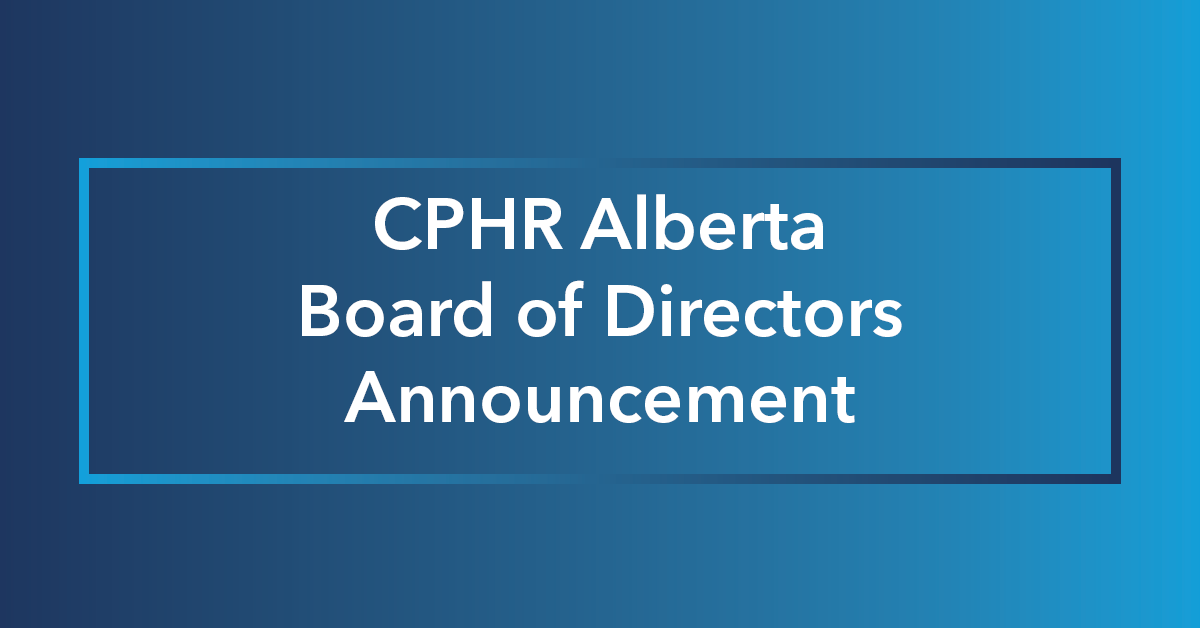
CPHR Alberta Operational Changes

- on behalf of the CPHR Alberta Board of Directors
It is with deep regret that CPHR Alberta says goodbye to our current President and CEO, Rod Miller. At the end of February 2022, Rod will be moving on to a new role. We want to thank and congratulate Rod as he takes on this new chapter in his career.
Through his time with CPHR Alberta, Rod has demonstrated incredible leadership within the organization. His work guiding CPHR Alberta and continued advocacy for the profession have had a profound impact on the HR industry.
The CPHR Alberta Board of Directors has already begun the work required for a new CEO search. In 2020, the association engaged our members, and the CPHR Alberta operational team for input on the leadership characteristics to be considered in our next CEO. The feedback collected will once again play a significant role as we begin our search. To support the Board in finding a strong candidate, we will be engaging the expertise of an executive search firm. We will be thoughtful in our approach to ensure we find the right leader to guide CPHR Alberta and champion our HR industry. Additional details on the CPHR Alberta CEO search will be shared in the weeks to come.
In the interim, it is with thoughtful consideration that the Board of Directors appoints Ioana Giurca as CPHR Alberta's Acting CEO. Ioana is the Vice President, Finance and Administration at CPHR Alberta and has been with the association for 13 years. Ioana started as a financial accountant and moved through various finance positions while expanding her duties to include administration, IT and HR. Ioana brings an incredible amount of knowledge and leadership to the role and will be a great support for CPHR Alberta operational team during this time of transition. We are optimistic about what lies ahead for the association in 2022.
Steve Kovacic, MBA, CPHR, SHRM-SCP
Chair, Board of Directors, CPHR Alberta
The views and opinions expressed in this blog post belong solely to the original author(s) and do not necessarily represent the views and opinions of CPHR Alberta.





